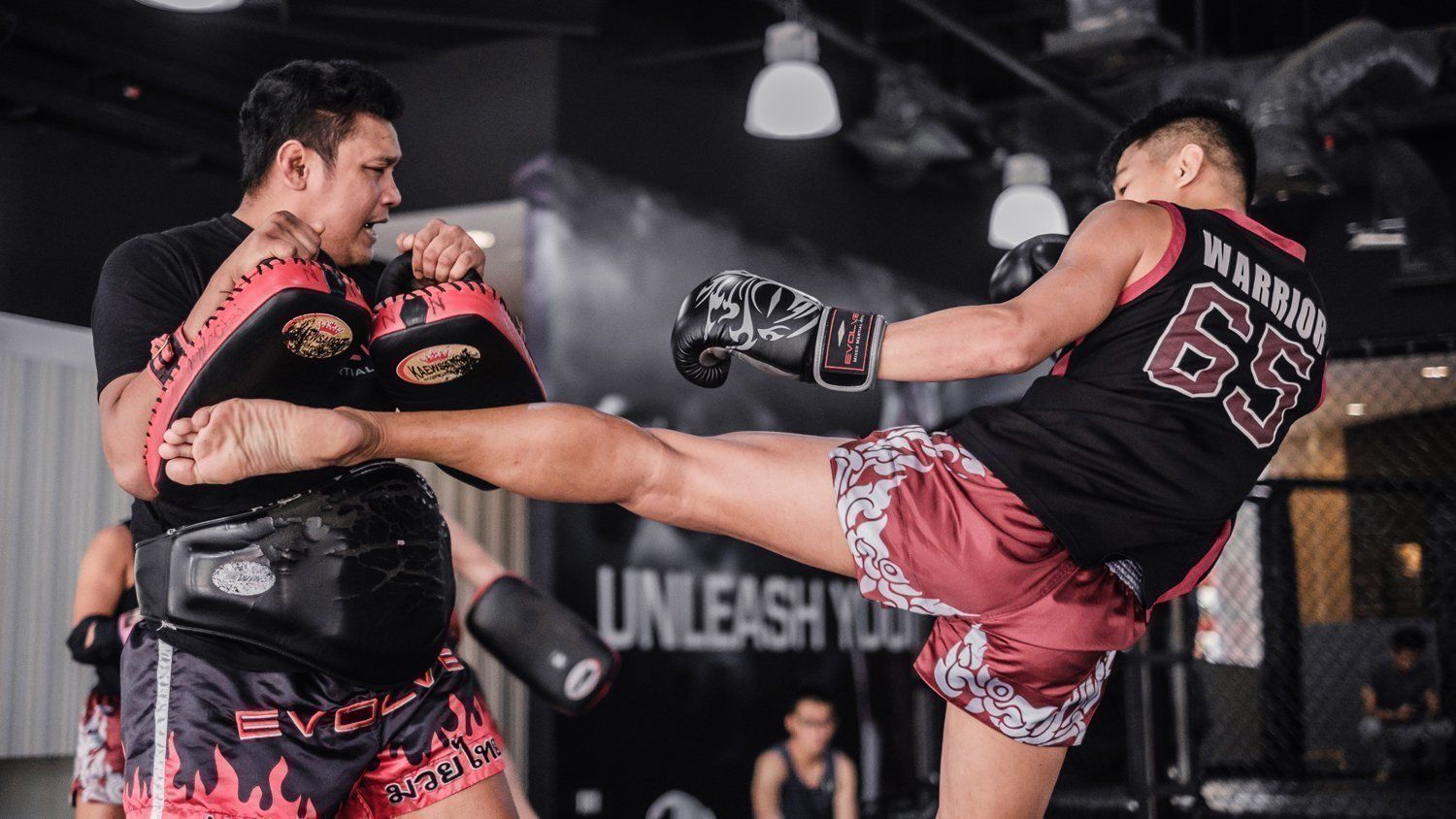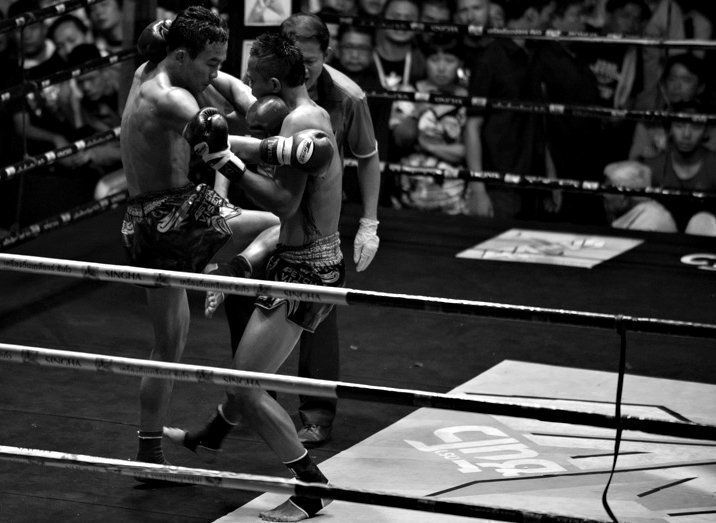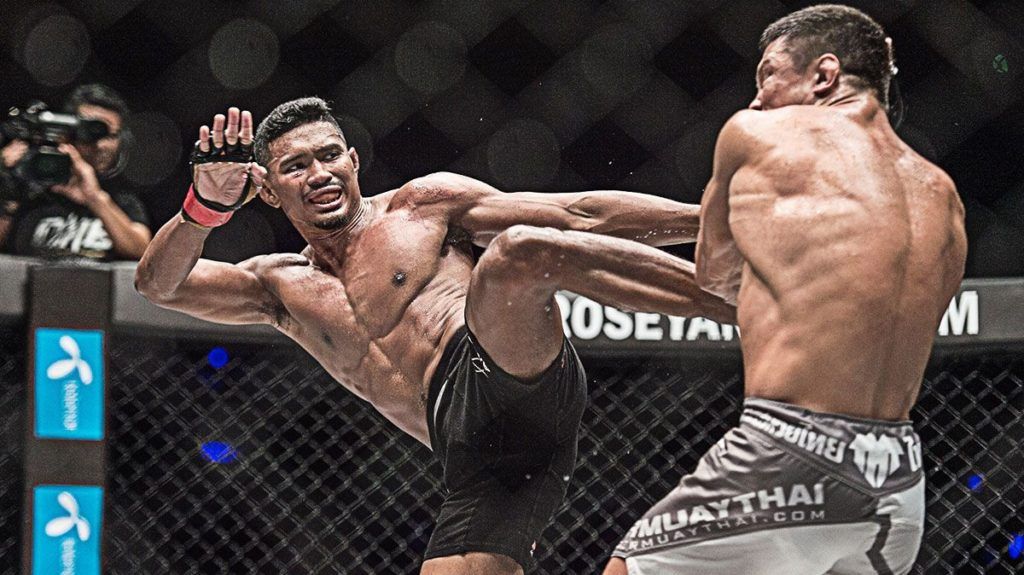It is exceptionally rare to find a mixed martial artist who doesn’t consider Muay Thai as the most effective of the striking arts. A number of the biggest names in the sport have utilized the techniques and skills obtained from Thailand’s national sport in their own respective styles, and have enjoyed tremendous success as a result.
In the UFC, former dominant featherweight champion Jose Aldo, and the previously unbeaten strawweight queen, Joanna Jedrzejczyk, have displayed high-quality Muay Thai on their way to record-breaking runs. What contributed significantly to the success of both of these fighters was their efficient use of techniques borrowed from Muay Thai and taken into the Octagon.
Other renowned champions and MMA legends such as Anderson and Wanderlei Silva, Jon Jones, and Donald “Cowboy” Cerrone have also exhibited some of the most deadly techniques from the “art of the eight limbs”.
Mixed martial arts, by definition, is a sport where there is a requirement of fighters to add variety to their skill set and a handle on a number of differing techniques. Muay Thai will generally be among the popular group of essential arts a fighter looks to include in his striking game, in addition to boxing and kickboxing. But what is it about the sport which makes it so effective?
First of all, it is the most efficient and potent of the striking arts, given the ability to employ a wide range of strikes using alternating parts of the body. While boxing is confined to punches, and kickboxing to punches, knees, and kicks, Muay Thai fighters train to make use of:
- Fists
- Elbows
- Knees
- Shins
- Feet
In MMA, it is useful to have a diverse attack, and with strikes permitted from all of the above, it makes absolute sense to add these techniques to your game. In defense, there are also techniques used in Muay Thai which maximize the opportunity for counter attacks and provide a means of escaping an opponent’s efforts to land successfully.
In most MMA fights, one will see many techniques demonstrated – offensively and defensively – which are taken from Muay Thai. Below are the most useful aspects of Muay Thai for a mixed martial artist to employ inside the cage:
Roundhouse Kick

The roundhouse kick is regarded by many as the most powerful and destructive strike in MMA. A staple tool of any serious mixed martial artist, the kick is also similar in nature to those found in kickboxing or karate. The technique which is used by Muay Thai fighters (in landing with the lower-shin) is what makes this version so popular with those looking to execute a roundhouse kick inside the cage.
The technique used to land a successful roundhouse is what makes it such a devastating tool. In its most basic form (the rear roundhouse kick), a fighter will aim to pivot on the lead foot, generate power by thrusting the open hip before making contact with the use of the lower shin. The fighter will perform a swinging motion with his rear arm to increase the effect of the strike. This kick is generally used to attack the leg, mid-section, or head of an opponent.
Low Kicks

Consider the lead leg low kick as kind of like the equivalent of a jab from the leg. It is almost unlikely to be considerable enough to knock an opponent out, but it has many uses. For example, it is, like the jab, a tool from which attacks can be worked off. It can also unsettle an opponent enough to force them into an opening of his guard. A lead leg low kick can also punish the opponent’s lead leg over the course of a fight and take away his ability to move, making him an easier target and less of a threat.
A rear leg low kick is an entirely different animal. Generally aimed at the thigh of an opponent, this technique can serve as a powerful and debilitating strike, or as a means to sweep the feet of an opponent. In MMA – a sport which includes fighting on the floor – it can be invaluable to a fighter’s arsenal.
Horizontal Elbow (Sok Tad)
https://www.youtube.com/watch?v=4cyOPUBipZI
If you have watched a few MMA fights in your time, the chances are you will be familiar with the horizontal elbow technique. This strike is among the most impactful in MMA.
The technical approach of the Sok Tad is straightforward but does require good balance and timing. A fighter will aim to throw an elbow to connect with his opponent’s chin or temple, keeping the elbow parallel to the canvas. If this strike is timed to perfection, the impact can be devastating. It may be a reasonably direct strike to master, but landing it can be difficult on an opponent with a good defense and guard.
Strikes from the Clinch

An essential part of any Muay Thai fighter’s game is to learn the clinch. With the right technique and understanding of the strategy which makes a fighter deadly in the clinch, this can be incorporated into a mixed martial artist’s game. High-level fighters will likely have to deal with an attack from the clinch at some point, and this makes it crucial for those who wish to improve their game in MMA.
The clinch is effectively grappling on the feet. The aim is to work into a dominant position from where landing an attack is easier, which happens when a fighter holds the back of the opponent’s head and gains leverage over his arms. From here, deadly strikes can be landed which can spell the end of a fight. The most impactful strikes from inside the clinch are as follows:
A straight knee – one which can be landed by stepping slightly back before pushing the knee into an opponent’s face or midriff.
A side knee – which is easier to land on the inside of a clinch – can take the wind out of an opponent, forcing him to drop his guard and either open up for an attack or be stopped by a referee.
Elbows – The impact of an elbow from inside the clinch is a dangerous and often under-utilized component in MMA. There are times when a fighter can land an elbow from over the top while in the clinch, or sneak in an up elbow to find big results.
Head control is also something to be aware of when perfecting your clinch game. By securing head control, a fighter can pull the opponents face down into the knee and inflict significant damage which could culminate in a knockout.
A notable example for any budding student is Wanderlei Silva’s victory over “Rampage” Jackson in the final of the Pride Middleweight Grand Prix in 2003. After an epic contest, Silva had sustained everything Jackson had thrown at him and managed to pull the shaky Jackson into a clinch by holding his two hands behind his head. “The Axe Murderer” then landed a knee before walking Jackson into the ropes from the center of the ring and landing two punches which forced his exhausted opponent to drop his head, making it easier to land a knee which was significant enough for the referee to step in and end the bout.
Switch Kick
When it is done right, the switch kick is a thing of beauty. Unlike most things considered aesthetically pleasing, it is completely devastating. The perfect marriage of speed and power is what makes the switch kick one of the most renowned imports from Muay Thai into MMA. This kick – like any exceptional strike – is based on a great understanding of technique, positioning, and when to strike. As it is exceptionally useful in close range, it can be a game changer for any fighter.
Mixed martial artists will – much like their Muay Thai counterparts – at some point have to deal with a fighter who rushes in. The switch kick can, therefore, be an excellent counter against a fighter with a poor guard and the propensity to go gung-ho into an attack. In contrast, this kick should be like a whip or a snipe which is unpredictable and catches the opponent literally off guard.
For aspiring MMA fighters looking to maximize their skills, the five fundamental techniques will elevate their game to the next level.
























